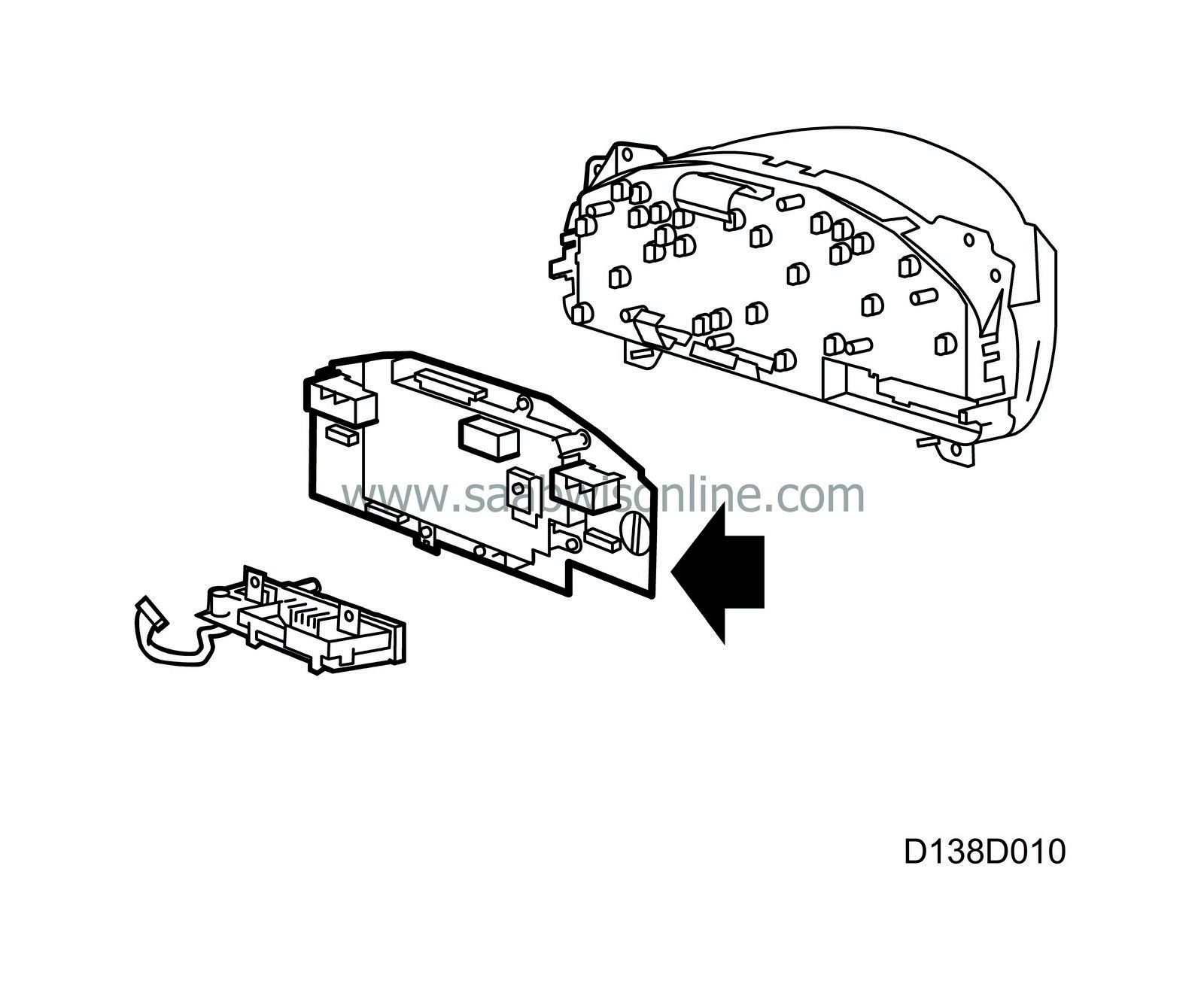Control module
| Control module |
| • |
Instrument unit
|
|
| • |
Control module (electronic unit MIU)
|
|
| • |
Odometer display
|
|
The control module is integrated into the main instrument unit and has two or three connectors, a 12-pin connector (K12), a 20-pin connector (K20) and a 22-pin connector (K22).
The design of the main instrument unit differs according to the engine variant mounted in the car. Since petrol-engined cars do not have a P bus, they are fitted with a 22-pin connector (K22) in addition to the two other connectors. Cars with a diesel engine have a P bus and do not therefore need this 22-pin connector.
The control module receives information from its own sensors and switches as well as from other systems. It processes the information and uses it to control instruments and lamps. Certain information is sent out on the I bus.
When a fault occurs, the control module stores the diagnostic trouble code. In case of replacement, a control module for that specific car must be ordered and its programming will then be carried out at Saab Automobile. The odometer reading stored in the old control module and shown on the display must be programmed into the new control module.
The instrument unit contains gauges and meters controlled by its own control module on the basis of information received from other systems as well as its own sensors. Warning and indicator lamps which are controlled by their own sensors/switches as well as control modules from other systems. All the warning lamps, indicator lamps and light bulbs (not LEDs) are replaceable.
The odometer and trip meter display is a unit with two digital counters, a six-digit counter for the odometer and a four-digit counter for the trip meter.
The control module stores the distance driven and displays it. There is a lamp in the display which is replaceable.



